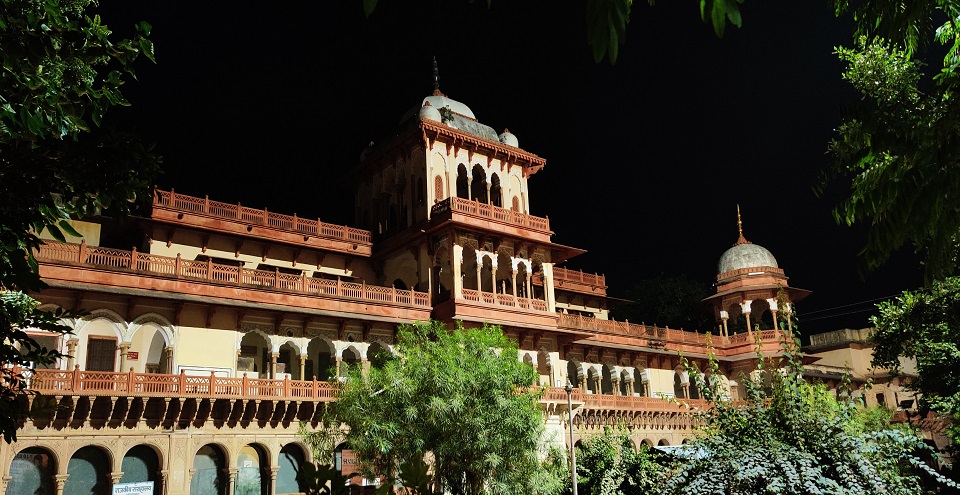
Jhalawar Fort: A Hidden Gem in Rajasthan’s Historical Tapestry
Nestled in the town of Jhalawar in Rajasthan, Jhalawar Fort stands as a lesser-known yet captivating example of Rajput architecture and history. With its unique blend of grandeur and strategic design, this fort offers an intriguing glimpse into the region’s royal past. Here’s an in-depth exploration of Jhalawar Fort, its history, architecture, and what makes it a noteworthy destination.
Historical Overview
Origins and Significance
Jhalawar Fort was established in the early 19th century by Maharaja Durjanshal, a Rajput ruler from the Kachwaha dynasty. The fort was built as part of the Jhalawar princely state, which was an important region in the Rajputana (now Rajasthan) during the British colonial period.
The fort served as a royal residence and a strategic stronghold, reflecting the grandeur and military prowess of its builders. It played a significant role in the defense and administration of the Jhalawar region, showcasing the political and cultural importance of the area.
Architectural Brilliance
Jhalawar Fort is notable for its distinctive architectural style, which combines Rajput and Mughal elements:
- Fortified Walls and Gates: The fort features robust walls and imposing gates that highlight its defensive capabilities. The entrance gates are adorned with intricate carvings and ornamental designs.
- Palaces and Residences: Inside the fort, visitors can explore various palaces and residences, including the Maharaja’s Palace. The palaces are decorated with elegant frescoes, carvings, and traditional Rajasthani decor.
- Gardens and Courtyards: The fort complex includes beautifully maintained gardens and courtyards. These spaces offer a serene environment and reflect the architectural aesthetics of the Rajput era.
- Temples: The fort also houses several temples, such as the Shiva Temple, which are adorned with intricate carvings and offer insights into the spiritual life of the region.
Exploring Jhalawar Fort
A visit to Jhalawar Fort provides a rich historical and architectural experience:
- The Entrance: Begin your exploration at the fort’s main entrance, which features impressive gates and intricate carvings. The entrance sets the stage for the grandeur of the fort.
- Palaces and Residences: Explore the various palaces and residences within the fort. Admire the decorative elements, frescoes, and architectural details that reflect the opulent lifestyle of the Rajput rulers.
- Gardens and Courtyards: Stroll through the fort’s gardens and courtyards. These areas offer a tranquil escape and showcase the aesthetic principles of Rajput architecture.
- Temples: Visit the temples within the fort to appreciate their architectural and spiritual significance. The temples provide a glimpse into the religious practices and artistic achievements of the time.
Practical Tips for Visitors
- Best Time to Visit: The best time to visit Jhalawar Fort is between October and March when the weather is cooler and more comfortable for exploring.
- Getting There: Jhalawar is accessible by road from major cities such as Jaipur and Udaipur. The town is well-connected by road, and the fort is a short drive from the town center.
- Dress Comfortably: Wear comfortable clothing and sturdy footwear suitable for walking and exploring the fort. Respectful attire is recommended, especially when visiting religious sites.
- Local Guides: Consider hiring a local guide to enhance your visit. A guide can provide valuable insights into the fort’s history and architectural features.
Nearby Attractions
While in Jhalawar, explore other nearby attractions to enrich your visit:
- Jhalawar City: Discover the historical and cultural heritage of Jhalawar City, including the Gagron Fort, which is a UNESCO World Heritage Site and offers a fascinating exploration of medieval architecture.
- Kesar Bagh: Visit Kesar Bagh, a beautiful garden and historical site located in Jhalawar. The garden features a range of floral and architectural elements.
- Chandrabhaga Temple: Explore the Chandrabhaga Temple, located near Jhalawar, known for its intricate carvings and religious significance.
Jhalawar Fort stands as a hidden gem in Rajasthan’s rich historical tapestry. Its blend of Rajput and Mughal architecture, combined with its historical significance, makes it a fascinating destination for those interested in exploring India’s royal heritage. Whether you’re admiring its grand palaces, wandering through its serene gardens, or visiting its ornate temples, Jhalawar Fort offers a unique and enriching experience.
Embark on your journey to Jhalawar Fort and uncover the timeless beauty and history of this remarkable fortress. Experience the grandeur of Rajasthan’s past and enjoy the captivating allure of one of its lesser-known treasures.
